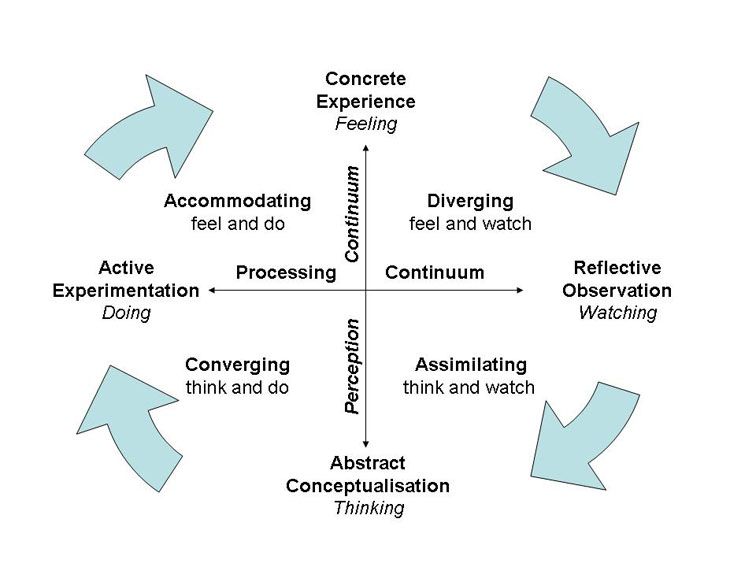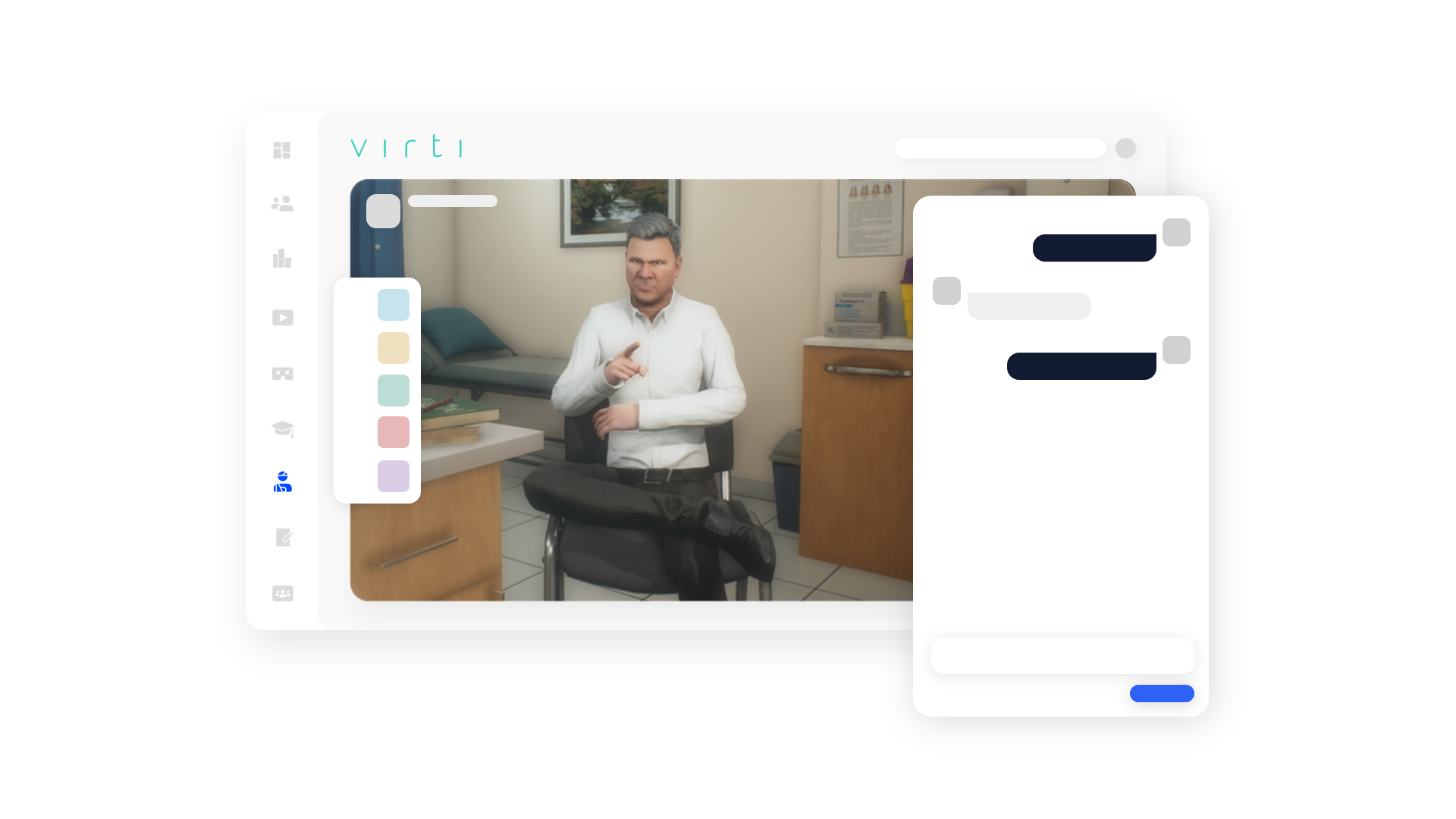What is experiential learning, and why is it powerful and important?
Experiential learning is one of the most effective and engaging, interactive forms of learning. Read this article from our Learning Experience Designer, Ben to find out more!

What is experiential learning?
Experiential learning is one of the most effective and engaging, interactive forms of learning. Distilled into its simplest form, experiential learning is a process that involves an individual or group, learning through activity and then committing time to reflect on their performance post the activity. What constitutes learning under the experiential learning model can range from developing an understanding of a topic, to ascertaining specific pieces of knowledge, right through to developing skills, and improving attitudes. Experiential learning aims to place the individual at the centre of the learning by making them take an active role in the learning process. It is a methodology distinct from more passive forms of learning such as in-person lectures and online webinars, and it is for this reason that it has become a more critical focus of L&D professionals and their bosses, as we continue to find the most appropriate and engaging ways of training people in a remote-working world.
Experiential learning is inextricably linked to the work of David Kolb, an educational theorist and Doctor of Social Psychology, who developed a 4-stage model to explain how we learn through experience. In his model, Kolb described how we learn in a cyclical manner, and how each of us aligns with a particular learning style.

The experiential learning model is a cyclical process of learning experiences. For effective learning to occur, the learner must complete the entire cycle. The 4 stages of the model are dissected by two continuums relating to perception and processing.
Perception: The model explains how we can perceive new information in different ways, either more through thinking or by feeling. By immersing ourselves in rich environments, we experience the concrete, tangible, felt qualities of the world through our senses. We can also experience events more through thinking than feeling, where we grasp new information through models, representations, or logical analysis. The best way to illustrate these two ends of the scale is by giving a real-world example. Imagine being a newly qualified detective sent out to your first crime scene. Books and lessons will have prepared you in forming an understanding of what to expect at a violent crime scene, and how to control your emotions. However, it is only after you arrive at the scene and experience what it’s like to get hit with pungent smells and loud shrieks of screaming people, that you truly get a feel for what a crime scene entails. It is clear both types of learning have their individual benefits, but to be truly informed one must experience both ends of the scale.
Processing: Processing relates to how we approach a task, and whether we learn by watching or by doing. Through reflective observation we observe an environment from a distance and often through multiple perspectives as we search for an understanding of the situation at hand. Active experimentation is far more concerned with taking action, and learning through in-the-moment experiences, which often carry more risk. Bringing these distinctions to life, imagine being assigned the task of cooking the family Christmas turkey for the first time this year. Through active experimentation, an individual would learn by cooking one or more turkeys themselves in the lead up to the big day, whereas through reflective observation, an individual would choose to watch a chef, or the household guru, cook the turkey and reflect on each stage of the process.
In addition to the 4 quadrants of the model, Kolb described 4 learning styles, of which each of us broadly aligns to one. These 4 learning styles are briefly described below:
Diverging: These individuals prefer to look at things from multiple perspectives. They can be sensitive to stimuli in the environment, and prefer to watch rather than do. They are great at gathering information and using their imagination.
Assimilating: These individuals prefer a concise, logical approach. Ideas and concepts are more important than people. They are great at taking in lots of information and organising it in a clear and logical way.
Converging: These individuals prefer technical tasks and like to be left alone to solve them. Interpersonal skills are not as important to them. They are great at solving problems and finding practical uses for ideas.
Accommodating: These individuals are hands-on learners, and rely on intuition over logic. They can often act on “gut feeling” and will rely on others analysis rather than their own. They are great at bringing forward new challenges and challenging others.
Assessing each of the learning styles is useful at the individual level in understanding your preferences for learning, which malleable across different disciplines. What is great about well-designed experiential learning scenarios is that every type of individuals can be accounted for. Whether that be someone who benefits more from immersive learning and being really engaged in a hands-on activity, or someone who prefers to acquire knowledge through a more reflective and thoughtful approach. This is the power of experiential learning, and this is why we are seeing a sharp rise in experiential learning platforms that offer a blended learning approach.

The science behind experiential learning 🔬
To avoid delving into the depths of theoretical literature too much, what successful applications of Kolb’s model have told us is that experiential learning has some distinct benefits over other learning theories and applications. In traditional teacher-directed approaches that use structured lesson formats and teacher-initiated activities, learning primarily takes place at an intellectual level. The student remains, more-or-less, passive recipients of information that does not require them to examine their own emotional responses to the subject material. They can thus remain personally unaware of the effects of their own response to the subject material on themselves or on other people, and the intensity of such responses. Whilst knowledge gain occurs at the cognitive level, it lacks context, which can lead to the incorrect or inadequate application of knowledge in authentic real-life situations. Classic e-learning platforms have tried their best to bring more perceptual experiences to us, by wrapping learning curriculum in narratives and basic interactivity, but have always struggled to get past the cognitive stage of learning. In this article, we show you the best way to deliver the best remote training to Sales Reps.
Experiential learning is a more holistic learning process as it merges cognition, perception, and behaviour through experience, allowing for growth and development across the different domains of learning; cognitive (thinking), affective (emotions and feelings), and psychomotor (kinaesthetic). For experiential learning to be effective it must be meaningful, engaging, and transferable to the real world. By training in contextualised environments that mimic real world scenarios, learners are able to gain true knowledge transfer through the integration of theory, practice, and context, giving relevance to their tasks and meaning to their learning. Those who are familiar with the principles of adult learning theory will be aware that effective learning designs aim to connect new information with previous experiences that are relevant to the current realities one faces. While this seems obvious on the face of it, it is important to understand the elements that create memorable and effective learning experiences.
What makes a good learning experience? 4 critical components! 🔑
Key to Kolb’s model is the understanding that learning is a continuous process grounded in experience. Good applications of experiential learning will immerse the learner in an experience, often one which the learner has limited exposure to. These experiences should focus on placing learners in hard-to-reach environments, such as the cockpit of a flight simulator, or revolve around interactions that occur regularly enough to be important to the learner but not often enough for them to master, such as giving negative feedback to a colleague. There are a number of characteristics that make an experiential learning event more impactful, such as heightening emotion and realism, but there are 4 fundamental components required for successful experiential learning to occur.
- The learner is aware of the processes that are taking place for learning to occur
- The learner engages in a reflective task which enables them to relate their current learning to the present or future scenarios
- The experience and content are significant to the person, and the learning holds importance to them
- The whole self is involved, and not just the mind. The body, thoughts, feelings, and actions are all engaged during the experience.

When you create experiences that are relevant, wholly immersive, and personal to a learner, it allows for greater learning and growth, as the learner has clear reference points during their active reflection. Active reflection activities should be designed to give learners the opportunity to share both their accomplishments and struggles, and ask them to reflect not only on their acquisition of knowledge but also how they felt during the experience. By allowing for this, learners become more aware of their areas of strength and weakness, as well as their emotional intelligence, and ability to react to certain environments. This invites them to become more invested in their learning opportunities, the goals they work towards, and activities they pursue in getting there. Learners can then begin to direct their own learning. Without this active learning component, any learning that occurs during the experience live, will sharply dissipate as it dissolves from short-term memory, following the theory of Ebbinghaus’ forgetting curve.

Okay, I get the science behind it now, but how do I design for effective experiential learning with limited resources? 🤔
The key to effective experiential learning is by creating a learning curriculum that tackles all four areas of Kolb’s model. Doing this in practice, however, is not always possible, as often organisations will be hamstrung by deficiencies in one or more areas. Some organisations may have access to really concrete experiences like in the world of construction for example, no pun intended, where learners have access to the sites and the tools allowing them to learn through feeling and activity. However, these organisations often lack the training infrastructure required to effectively communicate information at the conceptual level, preventing learners from effectively observing and conceptualising new information, causing delays and injuries to staff, as well as headaches for the health & safety team. The opposite can be true for companies operating in customer service or customer experience training, where they have the facilities in place to effectively train people through observation and conceptualisation but find it difficult to provide safe real-world environments for staff to practice and make mistakes in, without jeopardising the success and image of the business.
While in the past, such issues around the scarcity of resources have acted as barriers of prevention for the effective implementation of experiential learning curriculums within organisations, the emergence of new technologies, particularly Virtual Reality training platforms, have offered a pathway for L&D professionals to overcome these barriers and create immersive and engaging learning experiences that are not only fun for staff, but effective for the business. The latest simulated learning environments using Virtual Reality have proven to be more effective than traditional learning methods across measures of performance, such as reactivity, observational awareness, knowledge gain, as well as measures of self-evaluation, such as confidence, anxiety, and self-efficacy. Immersive learning platforms offer training specialists the ability to compare and contrast objective performance data with subjective learner data to gain insights that can be leveraged to improve both workplace performance and workplace happiness, the holy grail for CEOs. By capitalising on the latest advancements in technology, early adopters of this technology are beginning to see the immediate value they can bring to their business by effectively training and levelling-up their workforce.
Don't forget to subscribe to the Virti newsletter to keep up-to-date with the latest learning tips and Virti updates.
Further resources




